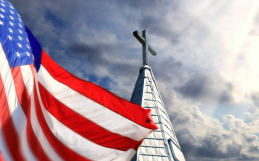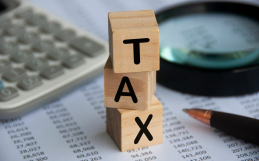The California Department of Justice, Office of the Attorney General, recently released an Audit of Donor Advised Fund (DAF) sponsors registered with its office. The OAG fund the Audit necessary due to the increasing popularity of DAFs as a means of charitable giving.
Defining a Donor Advised Fund
DAFs are private funds that DAF sponsors administer to manage charitable donations on behalf of an organization, family, or individual. A DAF donor receives an immediate tax deduction for the date of the donation, even though the DAF may actually spend money on charitable activity in a later tax year. Although the DAF sponsor maintains legal control of the donations, the donors advise when and where to distribute the donations. The nuance in the operation of DAFs that have rendered them controversial is that the DAF, as a charity, maintains complete control over where and when the funds which it controls are spent. The donor relinquishes any control over the funds (which makes the transaction truly a donation which is tax deductible when given). However, the donor may “advise” the DAF on where to spend the money. The DAF takes the donors advice into consideration, and in practice, a DAF is certain to follow that advice. If it were to do otherwise, donors would stop giving to the DAF.
DAFs have no minimum distribution requirements or time restrictions. This fact has led to the controversy over DAFs. Since DAFs tend to receive more donations than they spend, a lot of money has been built up in DAFs over the years. One report estimates that over $230 billion is being held by DAFs. That is, donors have taken tax deductions for $230 billion in donations which have not yet been spent on charitable activities. This has given rise to greater scrutiny by tax agencies and state attorneys general.
The Structure of the OAG Audit
The California OAG Audit divided DAF sponsors into three main types, as follows:
- Community Foundations (CF) – CFs comprised 51% of the total entities audited, whose name or mission identifies their goal as primarily serving a defined geographic region
- Commercial DAFs (CO) – COs made up 19% of the total entities in the audit, whose name identifies them as being founded or affiliated with an investment management company or financial advisor.
- Mission based DAFs (MB) – The remaining 30% of the entities were MB DAFs without a specific geographic focus or a connection to a commercial entity, but that often had a specific goal or purpose.
The Audit consisted of 57 DAF sponsors providing information from the most recent three reporting periods. These DAF sponsors included California-based DAF sponsors with over $10 million in assets (61%) and national DAF sponsors registered in California with over $200 million in assets (39%).
Charitable Asset Values and Growth Rates
The total charitable asset values held by all DAFs at the end of the third reporting period was $105.3 billion, with an average growth rate of 20%. COs held more charitable assets than all DAFs combined, receiving $20 billion in contributions and $75 billion in year-end assets. MBs had the highest growth rates, at an average of 35%.
Number of DAFs Managed
The number of DAFs held by sponsors increased each reporting period. However, the average growth rate for California sponsors (15%) was higher than for national sponsors (3%). COs had the highest average growth rate (17%), and the highest number of DAFs held nationally. Comparatively, growth rates for CFs were low (1.4%) and negative for MBs (-8%).
Charitable Contributions Received
The combined contributions received by DAFs peaked in the second reporting period at $29.4 billion, with $21.3 billion to national sponsors and $8 billion to state sponsors. Private foundations made between $1.1 and $1.7 billion in contributions in the three years, with more contributions going to California sponsors and CFs than national sponsors, MBs, and COs.
Cash and publicly-traded securities made up the vast majority of contributions for state and national sponsors. However, the division of these types of contributions varied depending on the type of sponsor involved and whether it was a state or national sponsor.
Grant Numbers and Ratios
Grant numbers from DAFs to charitable organizations steadily increased across all three reporting periods. The combined total of these grants over the three years ranged from $12.7 billion to $19.8 billion. The fund flow ratio measured 61% in the first year, 55% in the second year, and 72% in the third year. CFs reported the highest ratios of grants paid to contributions received in all three reporting requirements.
Grants paid to other DAFs also rose from $1.2 billion in the first year to $2 billion in the third year. Overall, about 11% of total grants went to other DAFs. Again, CFs had the highest share of grants to other DAFs relative to all grants.
The grant ratio is the “aggregate grant distributions from the individual DAF during the reporting period divided by the DAF’s value at the end of the reporting period.” National DAF sponsors primarily had grant ratios of greater than 50%. However, California donor advised fund sponsors had almost equal shares of grant ratios of less than 5% and greater than 50%. MBs largely had greater than 50% grant ratios, but the ratios varied among the other DAF sponsor types.
Policies
Most national and California-based Donor Advised Fund sponsors had written policies concerning disbursements, self-dealing, and advisory privileges. All sponsors reported advising all donors and others in writing that grants were only available for charitable purposes. More than half of the sponsors have policies requiring that grants go to 501(c)(3) organizations.
Administrative, Commission, and Investment Fees
Ninety-seven percent (97%) of donor advised fund sponsors charged administrative fees or fees based on the assets they hold. These fees cover the costs of processing financial transactions and providing donor support. The total fees over three years ranged from $191 million to $267 million.
On the other hand, only 32% of DAF sponsors charged commission fees for the trade or sale of DAF assets. These fees ranged from $5 million during the first reporting period to $4 million in the third reporting period.
Finally, 82% of donor advised fund sponsors charged investment fees, which differ according to how the assets are invested. These fees ranged from $10 to $15 million over three years.
Call Church Law Center Today to Discuss a Donor Advised Fund
Don’t hesitate to contact an experienced lawyer at Church Law Center when you need assistance with legal issues related to your California church, religious organization, or nonprofit organization, including questions about a Donor Advised Fund. You can reach our offices by calling (949) 892-1221 or contacting us online to learn more about how we can help. We offer a wealth of experience handling the unique legal issues that nonprofit and religious organizations routinely face.






